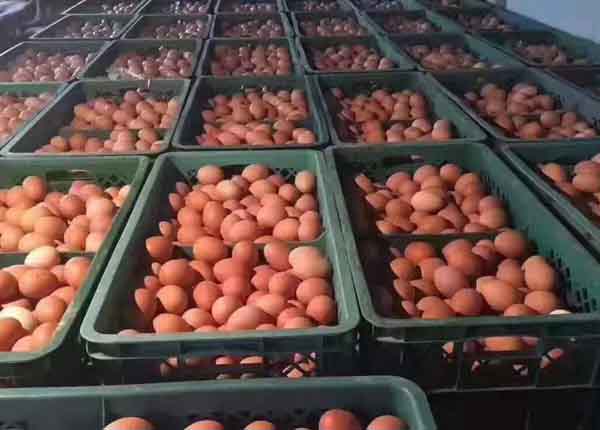
Profitability in egg industry
- home
- -
- News

Long-term profitability in the egg industry: reducing feather pecking and disease
The shift to cage-free production has become a reality for the egg industry around the globe, from the Americas to Asia.
The list of food and hospitality businesses pledging to only source cage-free eggs continues to grow, leading financial institutions are increasingly requiring that clients comply with cage-free standards, and savvy egg producers are staying ahead of the curve in meeting this growing demand for cage-free eggs.
But what does “going cage-free” mean for an egg farmer? Rather than a simple process of removing cages, navigating the transition and maintaining successful cage-free systems is in fact quite complex and requires an in-depth knowledge of cage-free management and bird behaviour. The good news is that there are many successful and profitable cage-free systems around the world, and producers we have worked with have found these systems to be quite rewarding.
Our role is to help egg producers employ best practices to meet the growing demand for cage-free eggs, and to do so in a way that is sustainable and profitable in the long-term. While each farmer’s situation is unique and there is no one-size-fits-all solution, success of cage-free production depends in large part on good management and husbandry practices. This article will outline some of these good practices relevant to farmers considering cage-free production, and cage-free farmers looking to get the most out of their existing farms.
In this article we focus on two topics: controlling and preventing severe feather pecking and infectious disease. A good understanding of both is crucial before undertaking cage-free production. We cannot highlight enough how following best management practices- especially in these two areas- will save time and money.
Severe feather pecking
As any egg producer already knows, severe feather pecking is a highly damaging behaviour where birds pull each other’s feathers out. It can spread very quickly throughout a flock and result in feather loss, a reduction in feed conversion efficiency, and high rates of cannibalism and mortality. Severe feather pecking can therefore result in significant economic losses for the farm. Early signs of feather pecking include signs of stress in a flock, flightiness, any sudden changes in behaviour or in the environment, and any plumage damage or feather loss.
thousands of chickens in a cage-free barn
Methods to reduce the risk of severe feather pecking in a flock include:
Good management. Regular monitoring the birds for any signs of plumage damage is important so that early intervention is possible. Staff should always act in a calm and gentle manner when around the birds, which can also reduce the risk of feather pecking.
The provision of environmental enrichment such as straw bales or pecking blocks. Birds that spend more time interacting with the environment often spend less time on damaging behaviours such as severe feather pecking.
Providing good quality litter (flooring material that allows foraging and dustbathing).
Ensuring that the rearing environment matches the laying environment as closely as possible. Therefore, layers in cage-free systems should be reared in cage-free environments. This reduces stress when birds are transferred to the laying environment and allows them to use the environment appropriately. This is important as stress is associated with severe feather pecking.
Appropriate stocking densities which should not exceed 9 birds/m2 .
Appropriate diets containing adequate insoluble fibre and protein, and mash feed rather than pellets. It is important to take into consideration what your breeding company and nutritionist suggests.
Infectious disease
Infectious disease can also present a significant risk to flock health as well as the profitability of the farm. Good practices in reducing the risk of infectious disease include:
Vaccination: birds should be appropriately vaccinated against common diseases in consultation with a local poultry veterinarian.
Biosecurity and health management: appropriate biosecurity and health management practices are crucial. Health management practices include regularly monitoring birds for any signs of disease such as lethargy, ruffled feathers, abnormal vocalizations, discolored combs, and a decrease in egg production. Most infectious diseases are transferred onto the farm by people. It is very important that the number of visitors be minimized, that any visitors wear protective clothing, that there are sanitization procedures in place between sheds, that clean and disinfected equipment are used, and that birds are not in contact with other species, including wild birds in free-range farms. These are just a few examples of biosecurity practices that affect the incidence of disease.
Successful and profitable cage-free production is multifactorial, and employing best practices to reduce feather pecking and infectious diseases are two important ways to increase long-term profitability of a farm. At Global Food Partners we understand the complexity of this topic and work one-on-one with producers to help identify and overcome their unique challenges they face in cage-free production.
